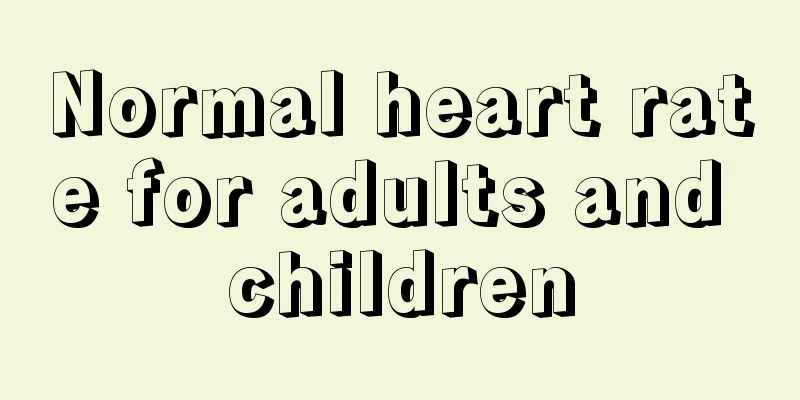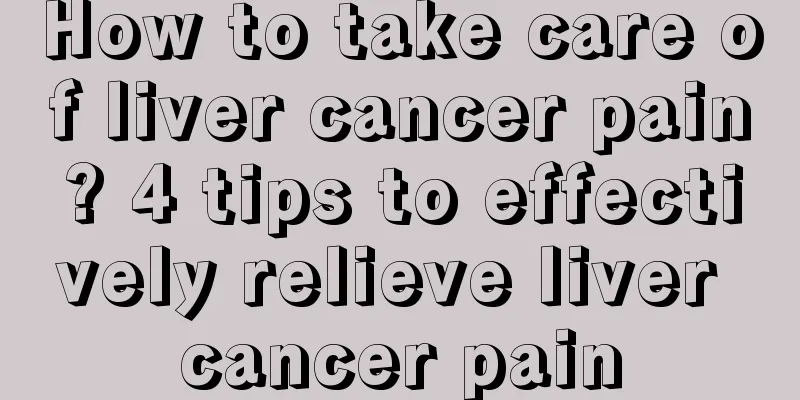Normal heart rate for adults and children

|
The rhythm of the heartbeat is relatively constant. When a disease occurs, it will affect the frequency of the heart's contraction and expansion, thus bringing adverse effects to the entire body. The frequency of heart beats, that is, heart rate, is almost different for everyone, but it is generally within the healthy range. Let’s take a look at the normal heart rate for adults and children. I hope everyone can understand it. There are significant individual differences in the resting heart rate of normal adults, with an average of around 75 beats/minute (between 60-100 beats/minute). Heart rate can vary depending on age, gender, and other physiological conditions. The heart rate of a newborn is very high, reaching over 130 beats per minute. Among adults, women generally have a slightly faster heart rate than men. For the same person, the heart rate slows down when the person is at rest or sleeping, and speeds up when the person is exercising or emotionally excited. Under the influence of certain drugs or neurohumoral factors, the heart rate can speed up or slow down. 1. A heart rate of more than 100 beats per minute in an adult (generally not more than 160 beats per minute) or more than 150 beats per minute in an infant is called sinus tachycardia. It is common in normal people after exercise, excitement, agitation, smoking, drinking and strong tea. It can also be seen in fever, shock, anemia, hyperthyroidism, heart failure and the use of atropine, epinephrine, ephedrine, etc. 2. If the heart rate is between 160 and 220 beats per minute, it is often called paroxysmal tachycardia. 3. A heart rate lower than 60 beats/minute (generally above 40 beats/minute) is called sinus bradycardia. It can be seen in people who engage in heavy physical labor for a long time and in athletes; pathologically, it can be seen in hypothyroidism, increased intracranial pressure, obstructive jaundice, and overdose or poisoning of digitalis, quinidine, or propranolol. 4. If the heart rate is lower than 40 beats/min, atrioventricular block should be considered. 5. A heart rate that is too fast, exceeding 160 beats/minute, or less than 40 beats/minute, is mostly seen in patients with heart disease. Patients often experience palpitations, chest tightness, and discomfort in the precordial area. A detailed examination should be conducted as soon as possible so that treatment can be targeted at the cause. |
<<: Tooth filling and anti-inflammatory pain
Recommend
How to prevent and treat cerebral infarction more effectively?
We must pay more attention to the prevention of c...
Soaking Ophiopogon japonicus and Rehmannia glutinosa in water has so many benefits
Ophiopogon japonicus and Rehmannia glutinosa are ...
Methods for treating fat granules
I believe everyone knows what fat granules are. F...
What are the symptoms of small cell lung cancer? Is small cell lung cancer contagious?
Lung cancer is a stubborn and malignant tumor. Ho...
Can I swim if I have rheumatism
In the hot summer, many people can't resist t...
Diet care for bone cancer is also very important
After suffering from cancer, you should take good...
The role of mugwort leaves is very important in Chinese medicine health preservation
In the past, every year during the Dragon Boat Fe...
Early symptoms of lung metastasis from colon cancer
Colon cancer refers to a malignant tumor disease ...
What disease is dry mouth a precursor to? 2 diseases need attention
The phenomenon of dry mouth is often easily overl...
How to get rid of acne? Teach you the correct way to remove acne
Generally, oily skin and combination skin will ge...
How to do Gua Sha at home
Gua Sha is a unique traditional treatment method ...
What causes excessive sweating while sleeping
If you sweat a lot when sleeping, we need to cons...
Why does it bleed when you suck hard in your mouth?
When we brush our teeth, we may find that our mou...
What to do if your eye bags are loose?
When people do not get enough rest or do not pay ...
Can I eat a slightly rotten mango?
Mango is a food that tastes good and is very nutr...









